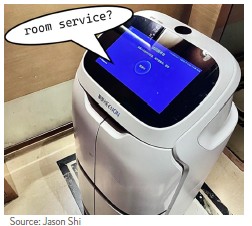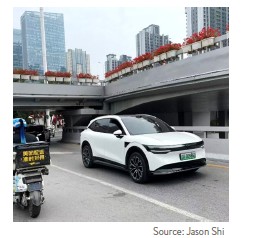Over the summer, my family and I spent three and a half weeks in China and Japan, visiting five cities, including my hometown of Shenyang. Experiencing these places again after over a decade in the U.S. revealed how rapidly technology, consumer behavior, and demographics are reshaping Asia’s two largest economies. Here’s what I observed.
Automation is part of daily life.

When we landed in Tokyo and checked into our hotel, we were met not by front desks but a row of sleek self-service kiosks in the spacious lobby. After scanning my passport, the machines instantly pulled up my booking, processed payment, and issued my room key, all within two minutes. A staff member stood by politely, but the process was effortless. A few days later in a hotel in Dalian, we encountered a delivery robot gliding across the lobby, summoning elevators on its own and dodging people (to the delight of my kids, who tested that feature more than once). Designed to deliver meals straight to guest rooms, it felt like a preview of the future. With growing labor shortages and demand for contactless service, it’s not hard to imagine fully-automated hotels becoming the norm.
Electric vehicles are everywhere.

Unlike in the U.S. and Japan, where Tesla dominates the EV market, China’s EV landscape is filled with dozens of domestic brands competing vigorously. Conversations with friends and family confirmed what I was seeing – nearly everyone had already switched to an EV or intended to for their next car, mainly due to lower prices, cheaper energy costs, and advancing technology. According to McKinsey, about 50% of vehicles sold in China in 2024 were EVs. Furthermore, public policy is encouraging this transition – and by 2035 the government wants EVs to “dominate” new car sales. At this pace, China could become the first country where conventional gas-powered cars belong only in museums.
Mobile is the only way to pay.
Seven years ago, credit cards and cash were still widely accepted. Today, most businesses, from high-end shopping malls to local farmers market, only take mobile payments like WeChat Pay or Alipay. In fact, mobile payments accounted for about three quarters of all payments in China in 2024. When I mentioned my surprise to a close friend, he laughed and explained that his phone has become his all-in-one tool: car key, home key, wallet, ID, etc. – it has everything he needs to leave his home. While this digital integration is convenient and has even reduced theft, it also carries risks. If the internet goes down or data is compromised, the consequences can be serious. A quick reminder to future travelers to China, setting up mobile payments in advance is essential! Don’t be like us, and find yourself stuck in a cotton candy kid meltdown with “only” cash and card in hand and no way to pay.
No one is having kids.
One of the most surprising changes was that I hardly saw any pregnant women in China. This stands in stark contrast to the policy shift of the past decade. China ended its One-Child policy in 2016, moved to allow two children in 2021, and more recently has even begun to offer subsidies to encourage births. However, when I talked to families and friends, I understood that the incentives are insignificant compared to the high costs of raising a child. The fertility rate reflects this and has fallen to around 1.0 – far below the replacement level of 2.1. If this trend continues, China faces a shrinking younger generation, and that will have profound consequences for both its economy and society.

All these trends are emerging globally, but the pace and scale I witnessed in China – and to a lesser degree in Japan – are far beyond what I see in the U.S. Returning after more than a decade abroad offered not only a personal reconnection with familiar places and people, but also a reminder of how rapidly economies and society can transform.